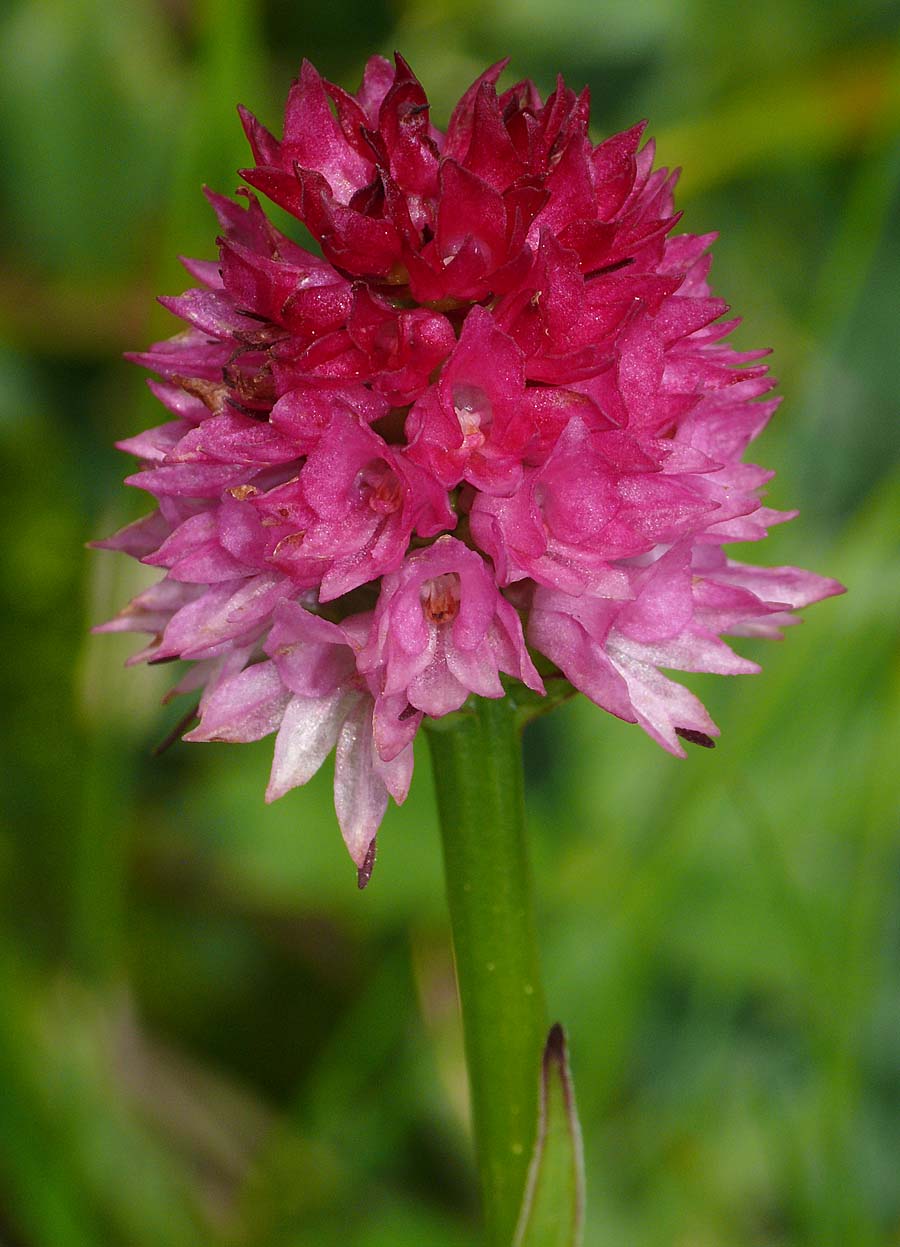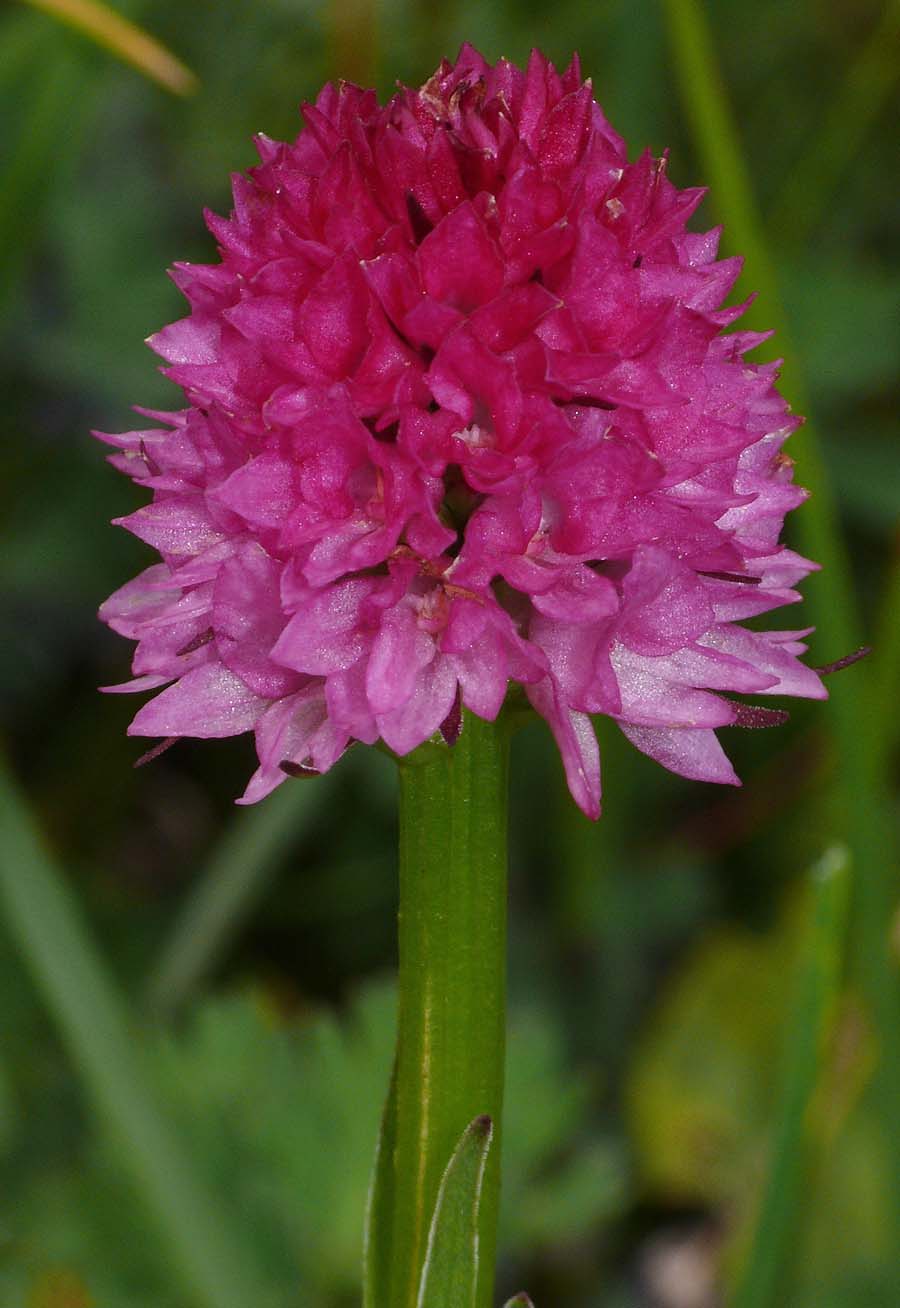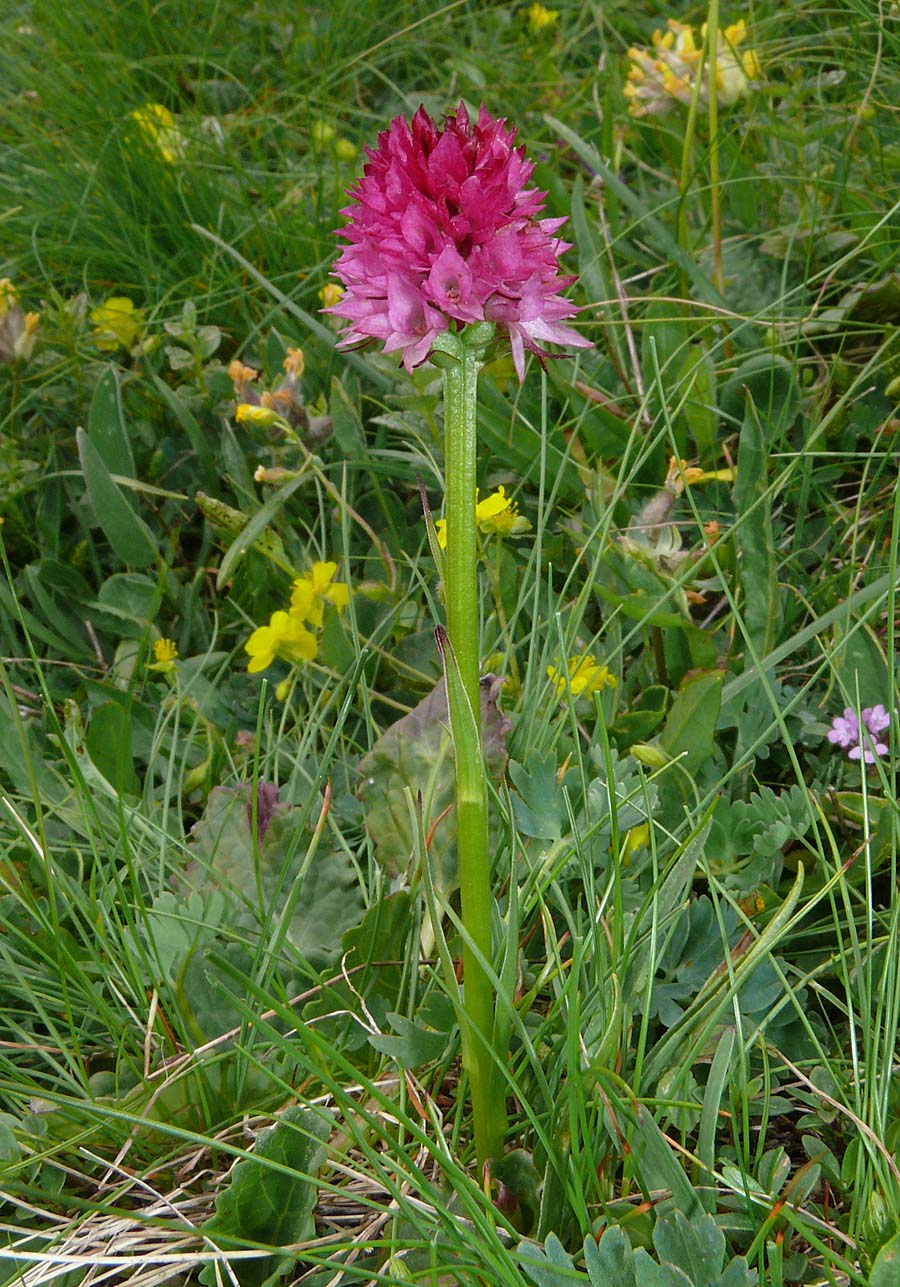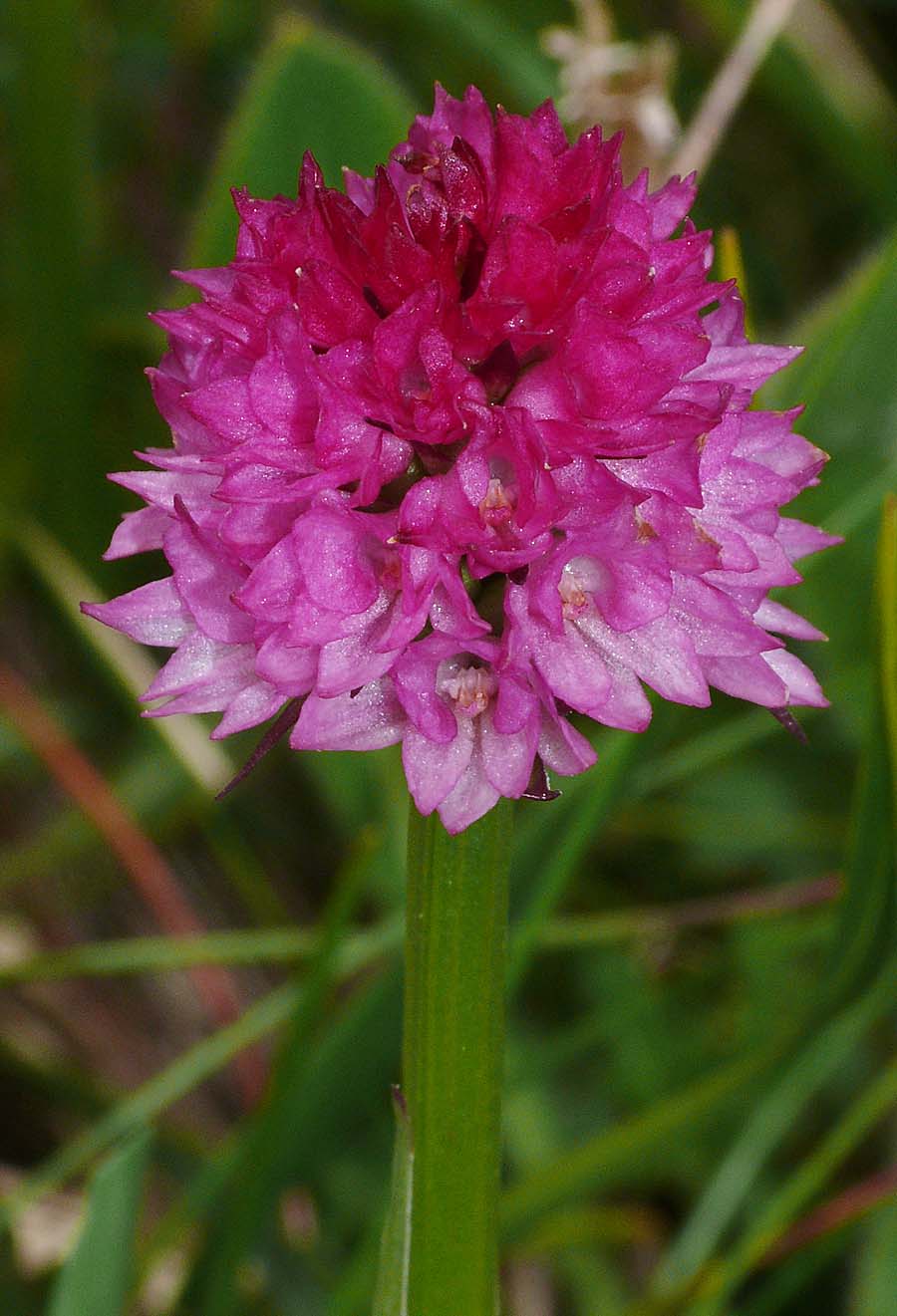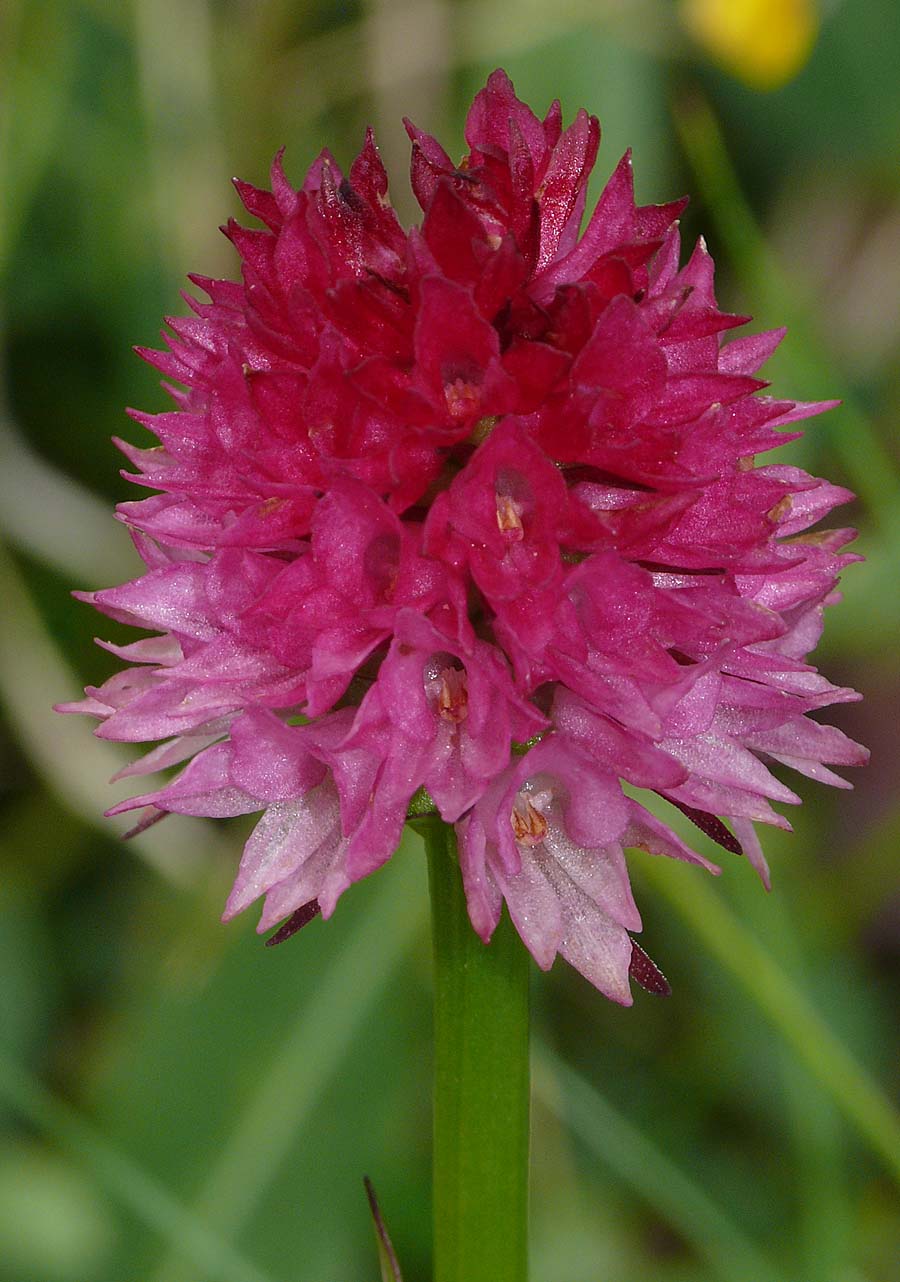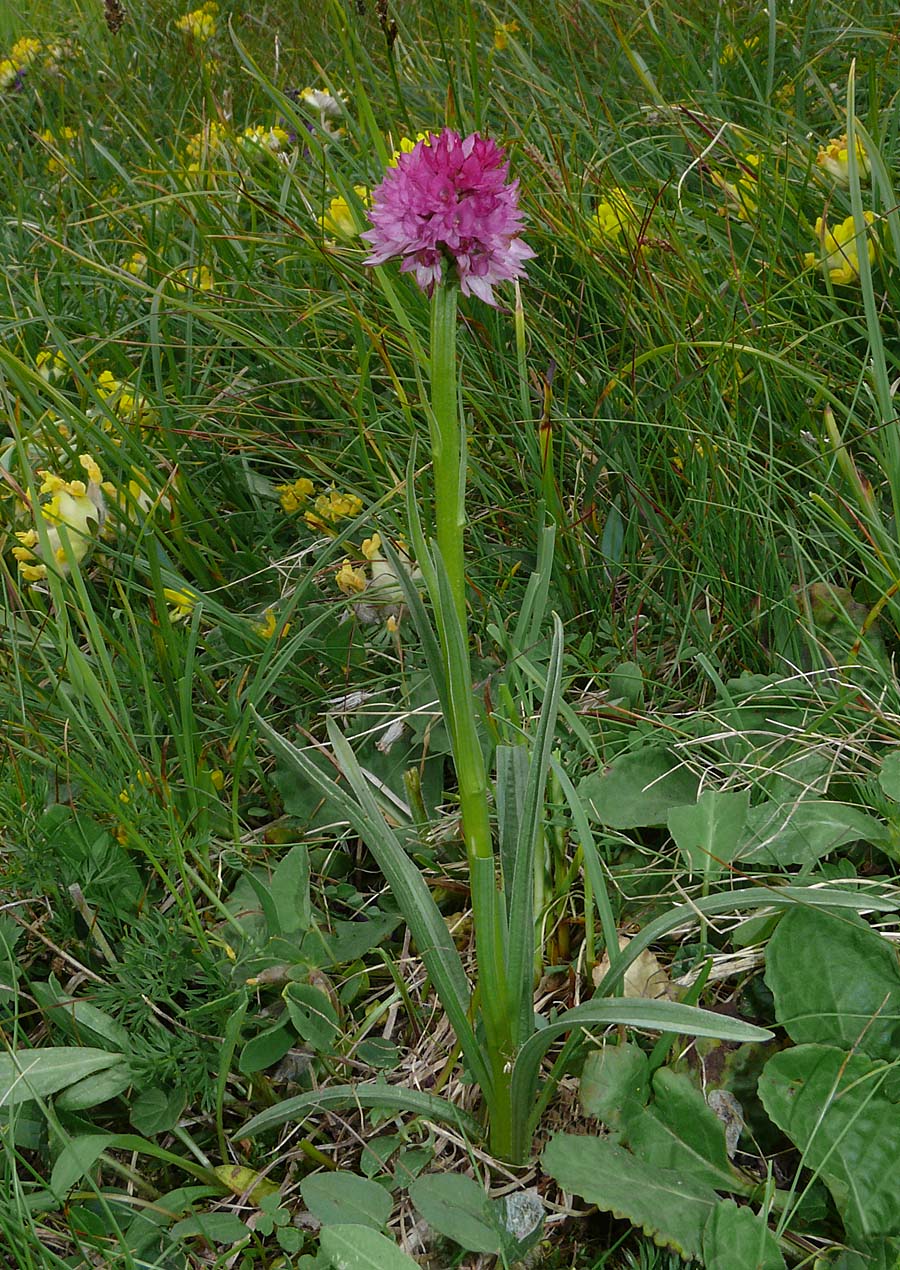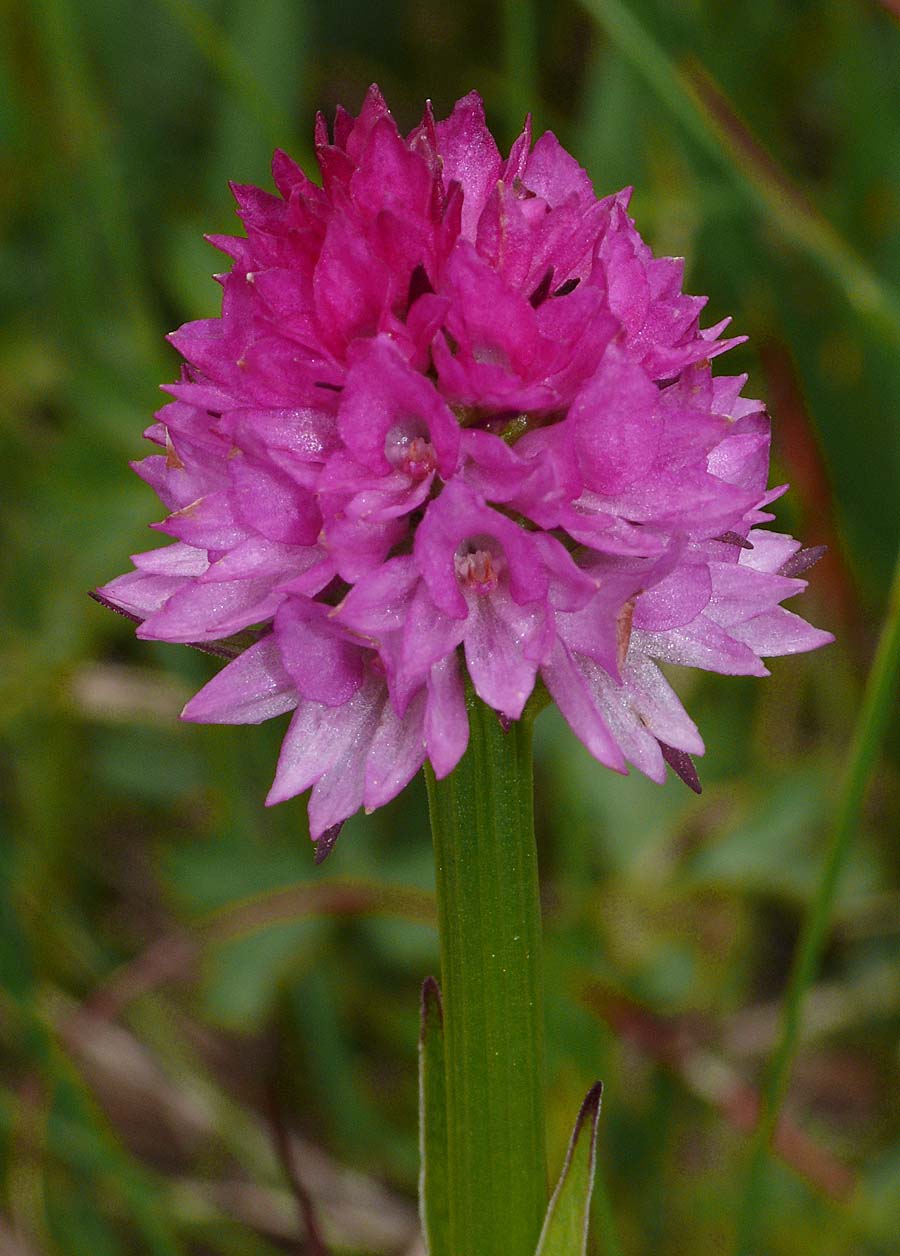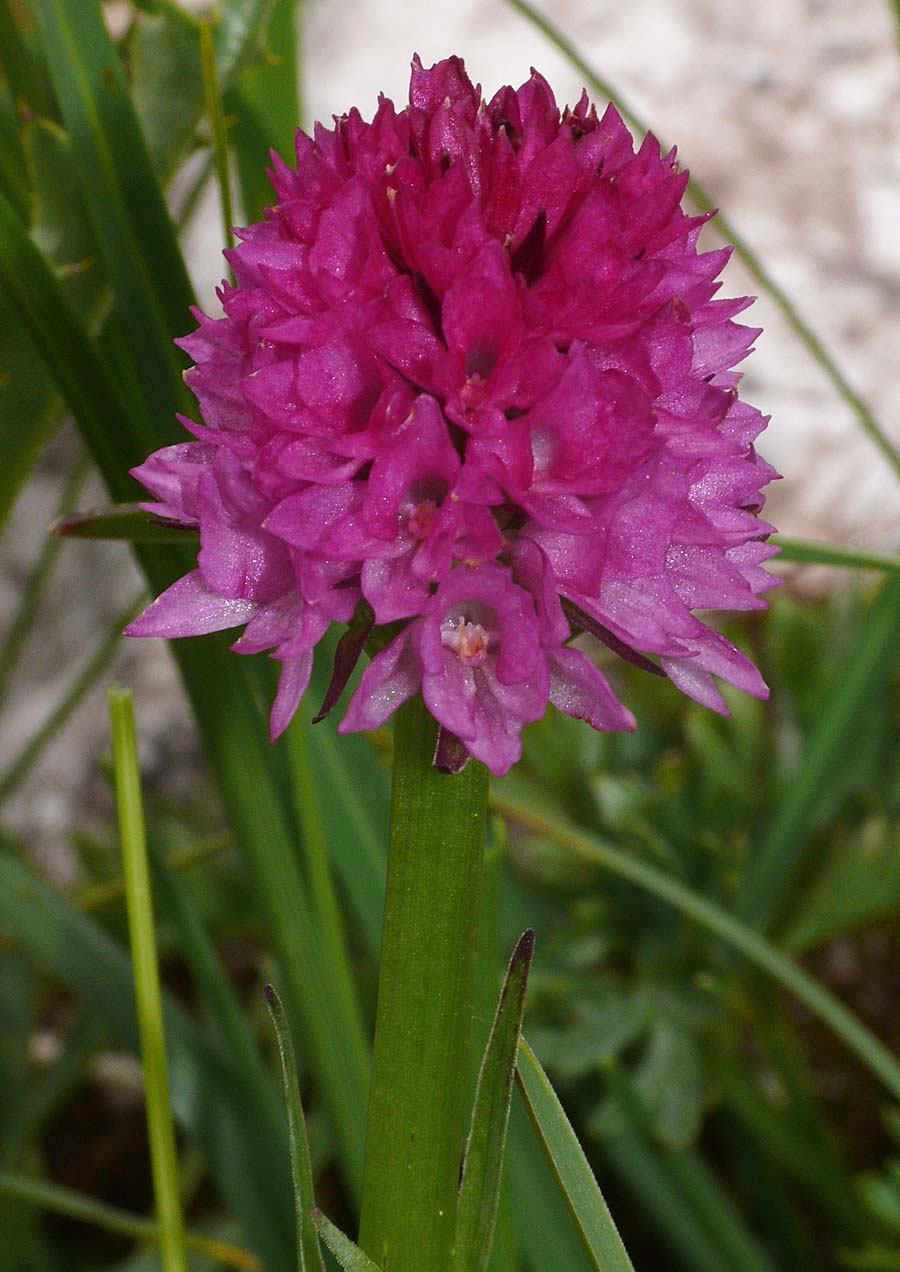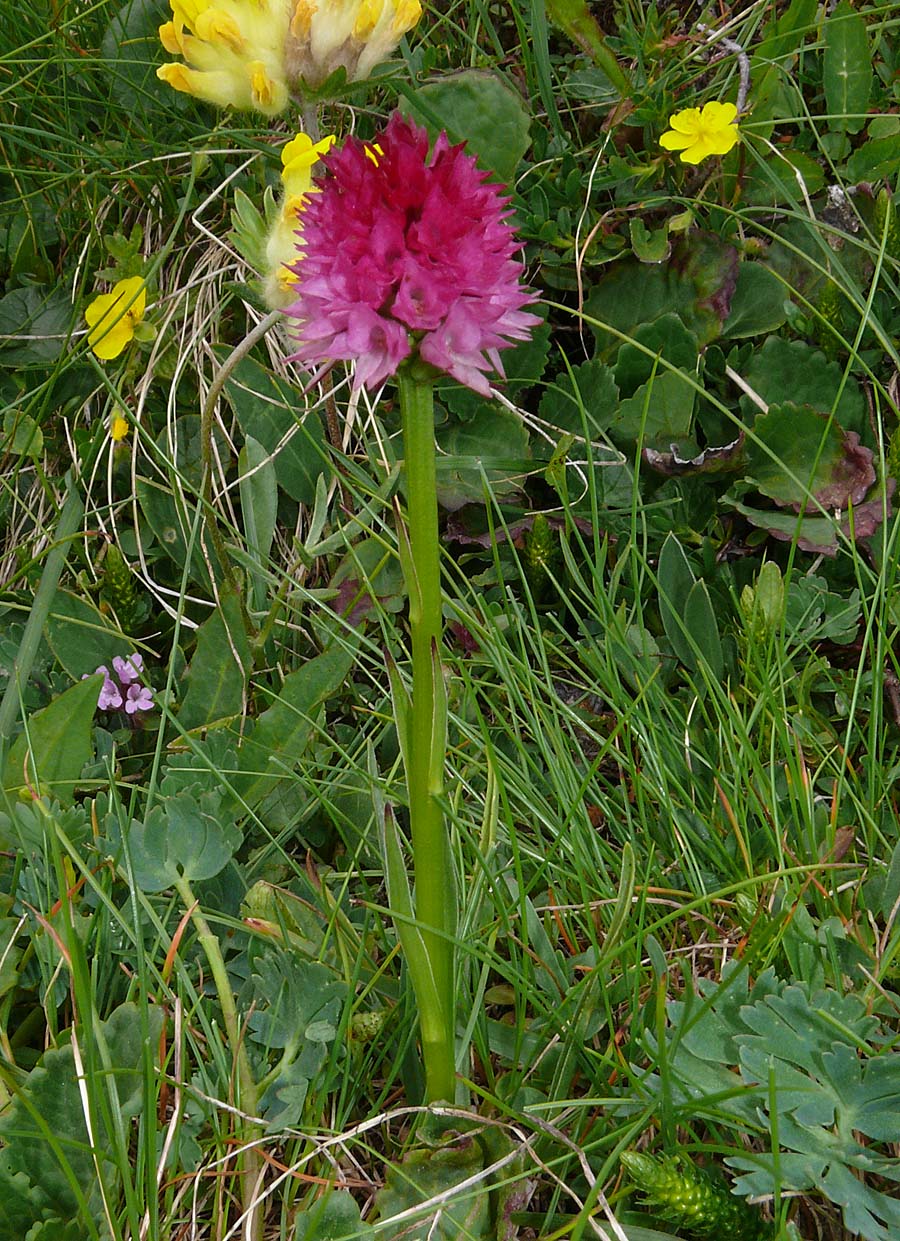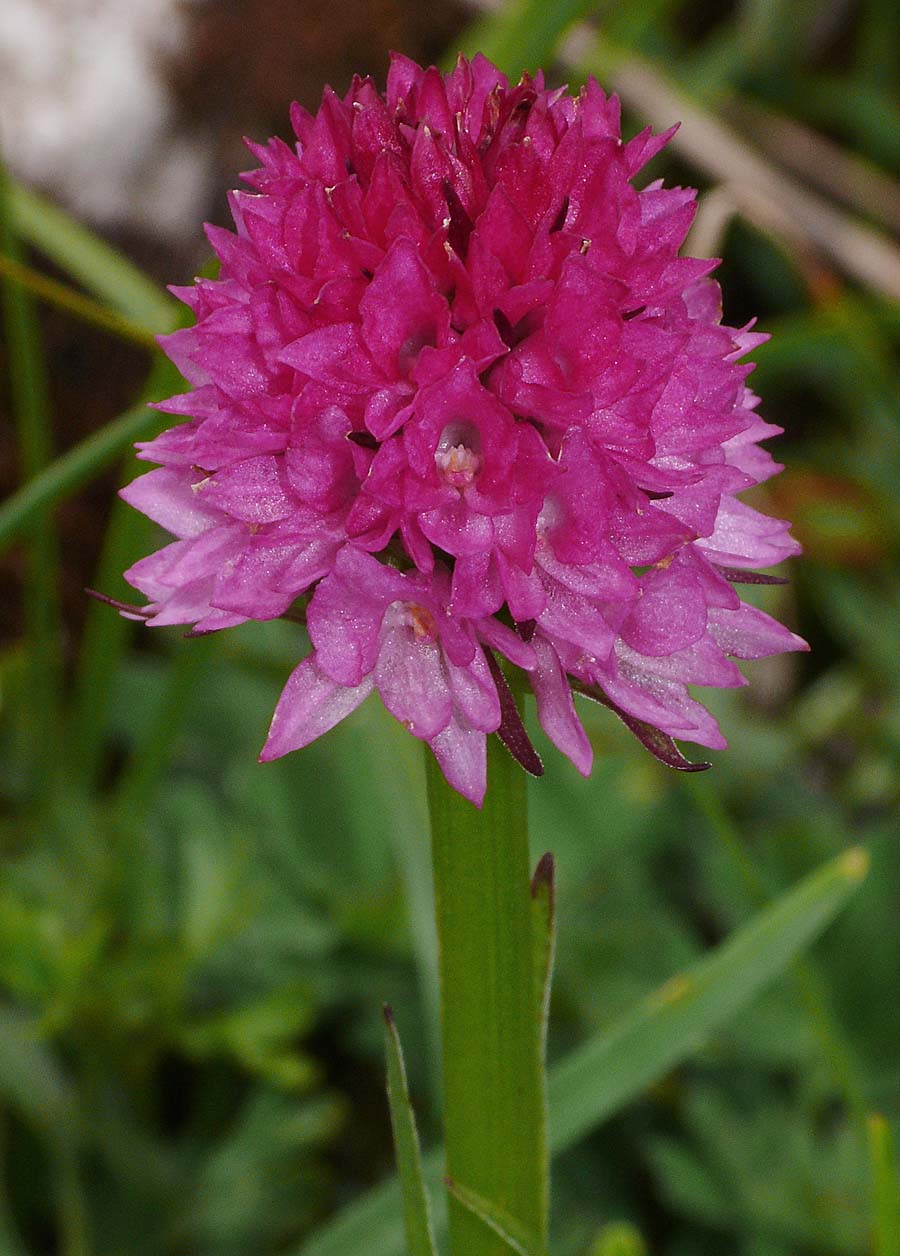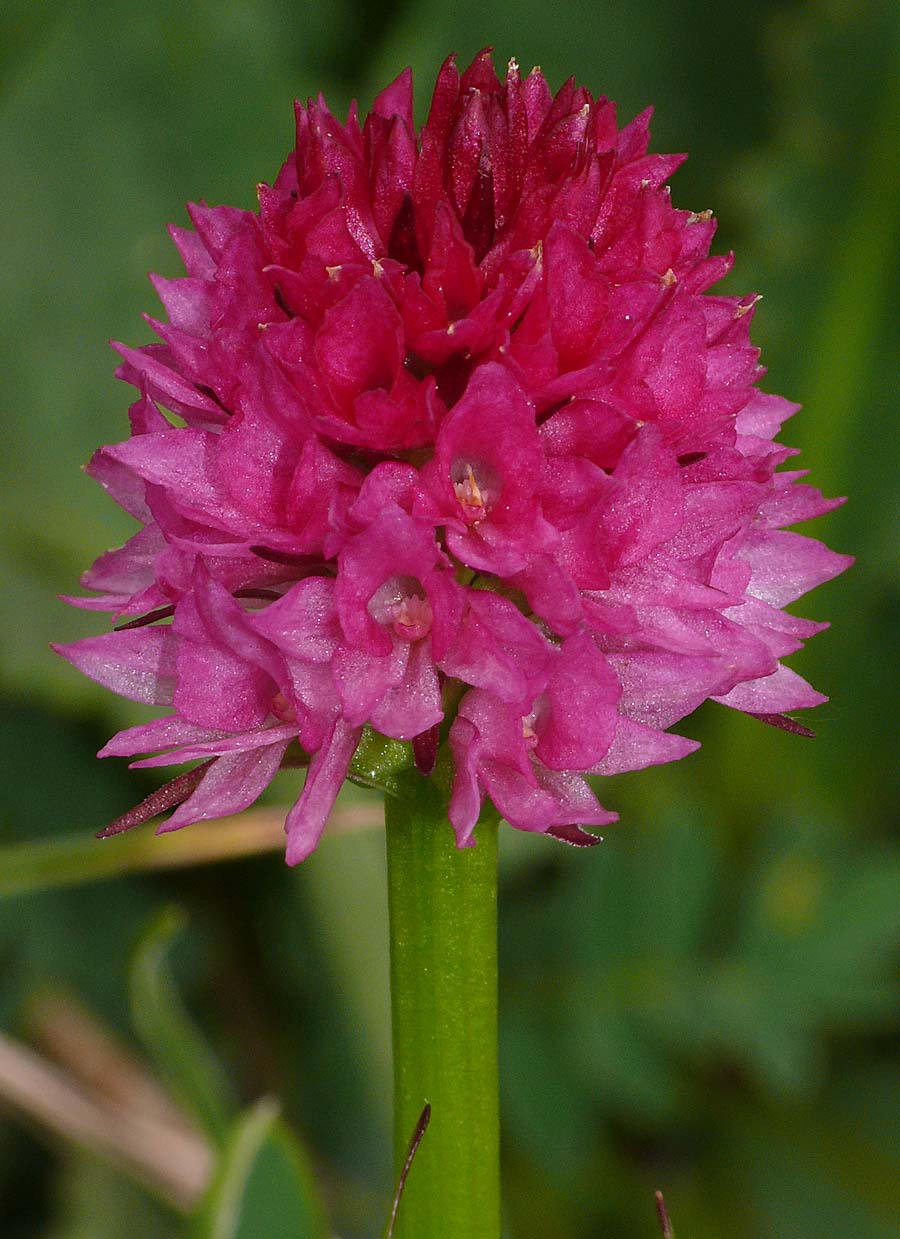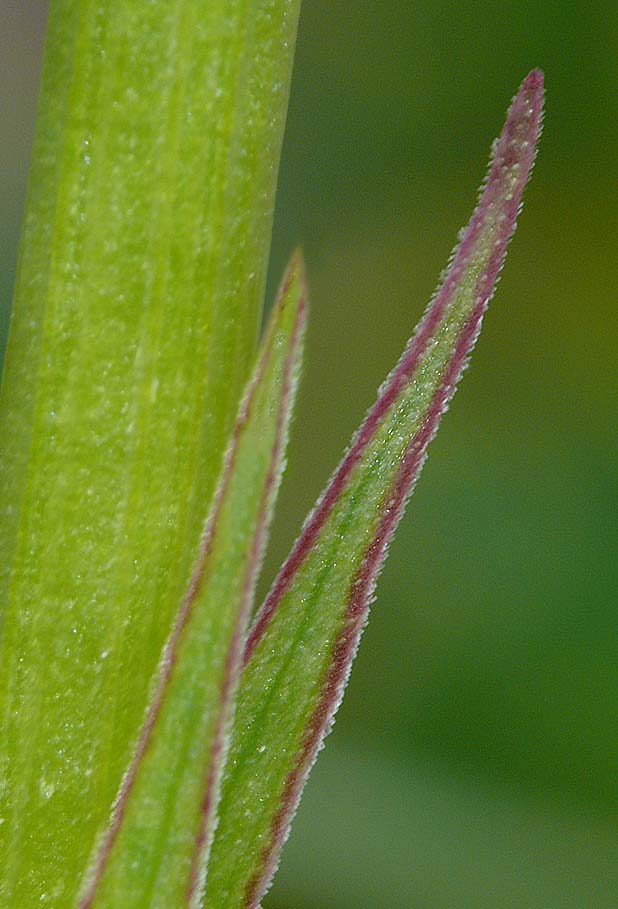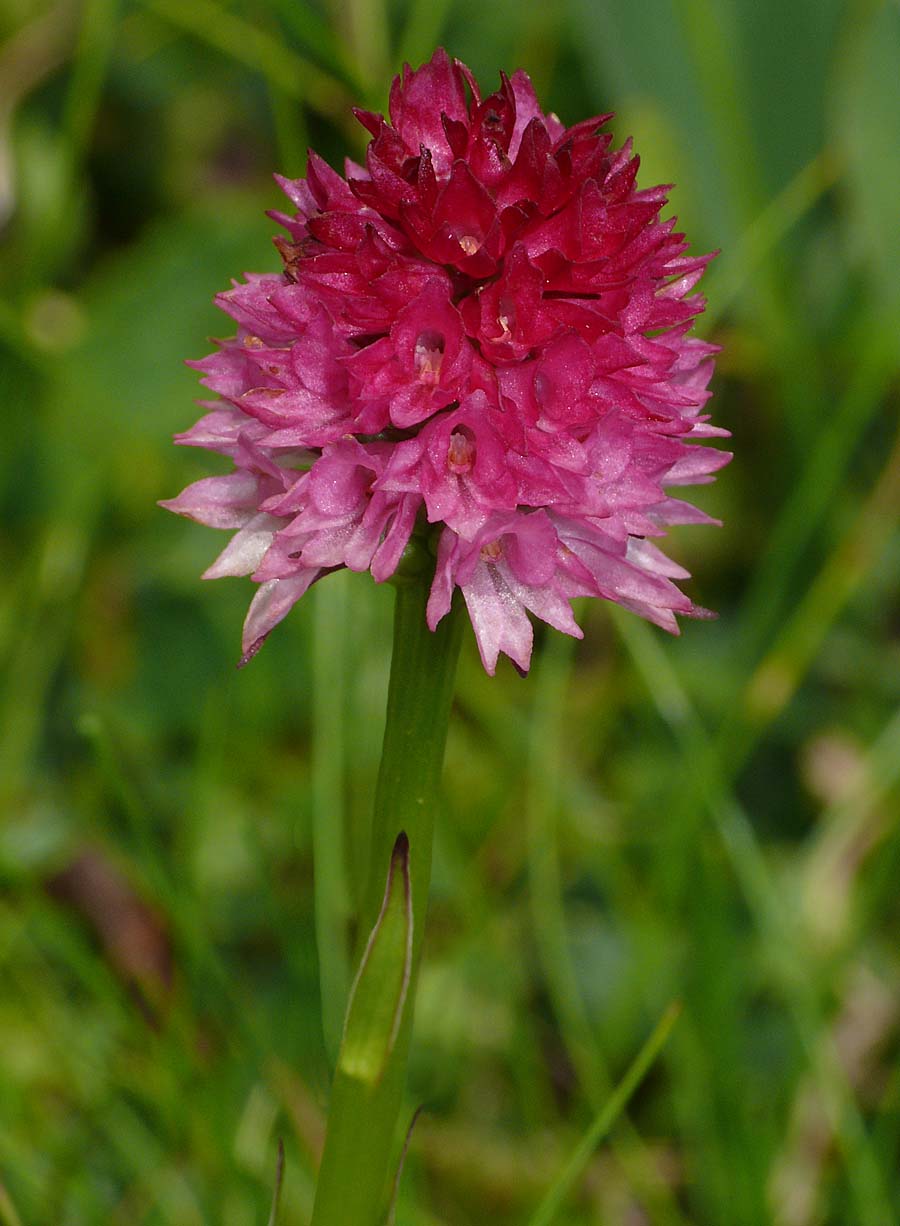This species was first described as Nigratella buchmanniae
by Teppner and Ster from Trento, Italy in 1998 and was named in honour
of the 20th century Austrian naturalist Mme A. Buschmann. It has now been incorporated into the fifteen strong G. nigra
group within the genus Gymnadenia.
This is one of the rarer vanilla orchids being endemic to northern Italy and known from just a handful of sites in the Brenta range of the Italian Dolomites, where it grows in small, loose colonies, sometimes individually at altitudes in excess of 2300 metres. Although growing in a harsh and extremely rocky environment, usually calcareous pavement, it prefers the small sometimes isolated patches of short grassland where it seeks out some protection in the cover of small dips and depressions or on banks to the leeward side of the mountain.
It is similar in appearance to the Austrian endemic, G. archiducis-joannis but with such a significant difference in distribution, confusion is impossible. Both species are apomictic (reproduce asexually) and this mechanism is a significant factor in their ability to survive the rigours of high altitude existence. G. buschmanniae is a small but sturdy orchid with an angular ridged stem and a noticeable hyaline, serrated border to the lower bracts (see photo 12). Its intensely coloured, deep pink flowers fade with anthesis and form a domed inflorescence reminiscent of a diminutive G. bicolor.
It is a late flowerer, first appearing in mid July and sometimes still flowering into mid August. This can however vary from year to year and certainly in 2018 when these photographs were recorded, plants were in full flower and others fading by the 20th of July.
This is one of the rarer vanilla orchids being endemic to northern Italy and known from just a handful of sites in the Brenta range of the Italian Dolomites, where it grows in small, loose colonies, sometimes individually at altitudes in excess of 2300 metres. Although growing in a harsh and extremely rocky environment, usually calcareous pavement, it prefers the small sometimes isolated patches of short grassland where it seeks out some protection in the cover of small dips and depressions or on banks to the leeward side of the mountain.
It is similar in appearance to the Austrian endemic, G. archiducis-joannis but with such a significant difference in distribution, confusion is impossible. Both species are apomictic (reproduce asexually) and this mechanism is a significant factor in their ability to survive the rigours of high altitude existence. G. buschmanniae is a small but sturdy orchid with an angular ridged stem and a noticeable hyaline, serrated border to the lower bracts (see photo 12). Its intensely coloured, deep pink flowers fade with anthesis and form a domed inflorescence reminiscent of a diminutive G. bicolor.
It is a late flowerer, first appearing in mid July and sometimes still flowering into mid August. This can however vary from year to year and certainly in 2018 when these photographs were recorded, plants were in full flower and others fading by the 20th of July.
